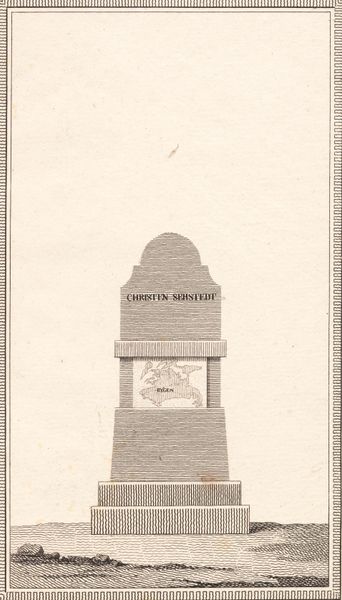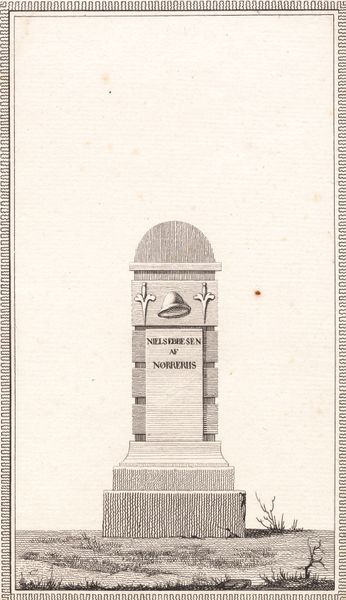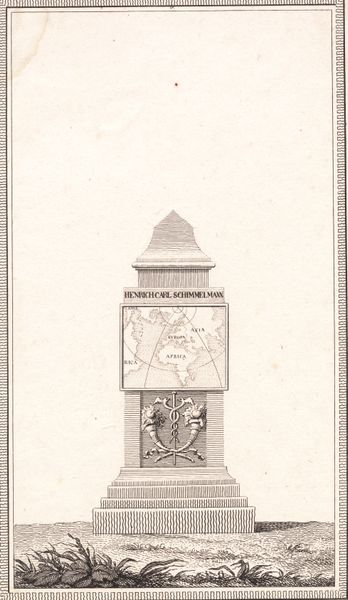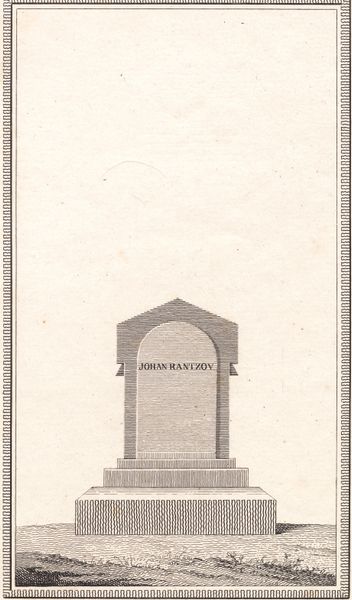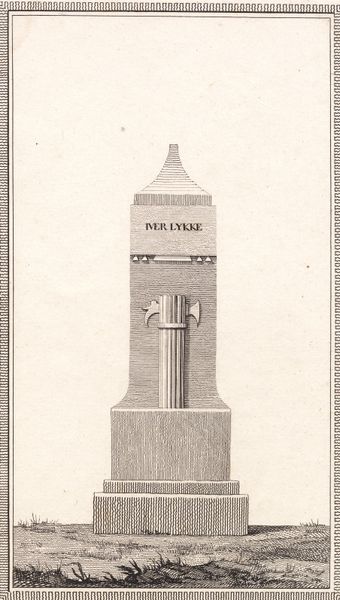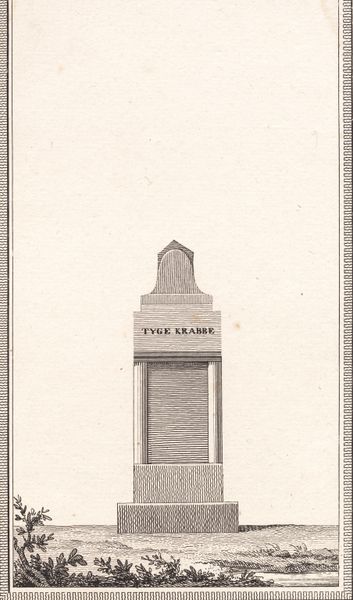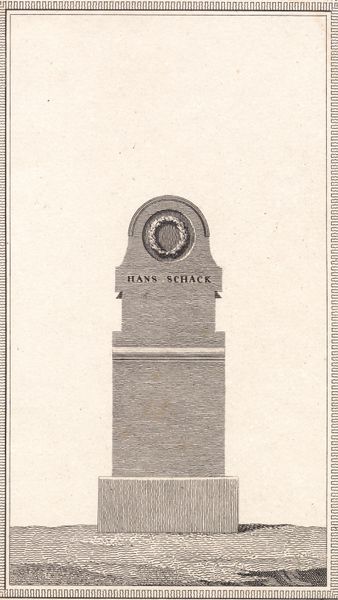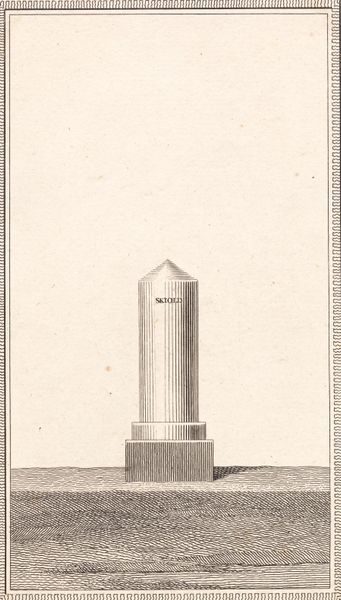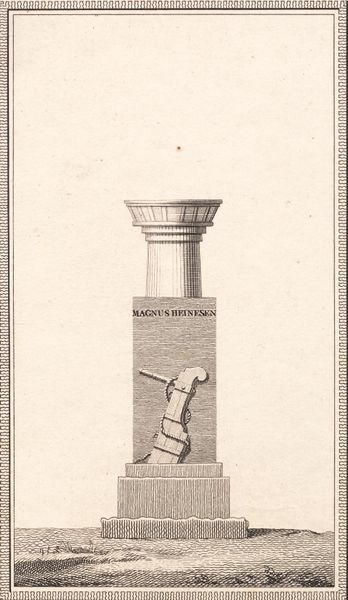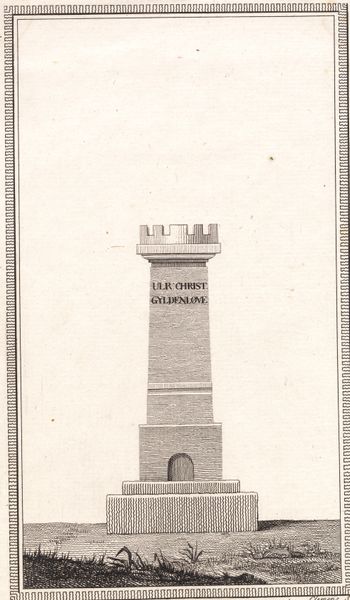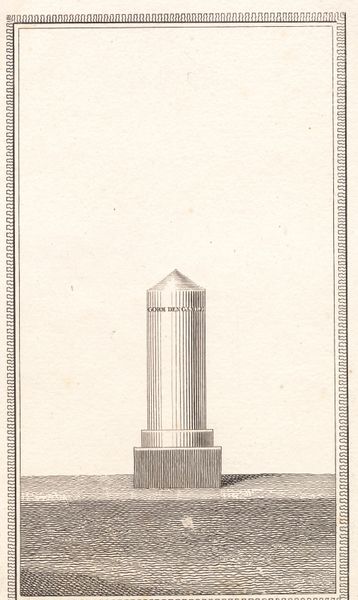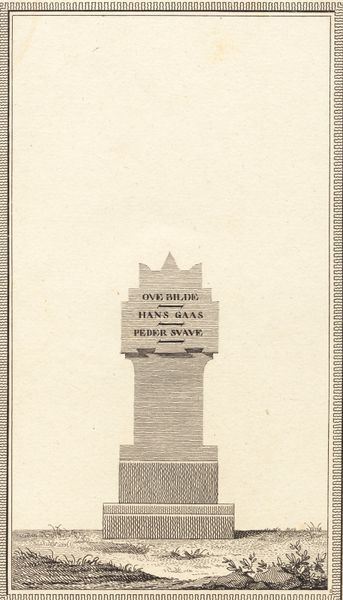
print, etching, paper, engraving
#
portrait
#
neoclacissism
# print
#
etching
#
paper
#
form
#
line
#
engraving
Dimensions: 178 mm (height) x 102 mm (width) (billedmaal)
Editor: Here we have J.F. Clemens' etching and engraving "J.H.E. Bernstorff," made between 1779 and 1781. The monument-like form rendered with precise lines really catches my eye. What do you see in this print, focusing on its form and composition? Curator: The meticulousness of the engraving immediately stands out. Consider how the artist has employed line – its weight, direction, and density – to articulate form. The monumentality you noted is achieved precisely through these calculated variations. Do you observe how the density of lines shifts to create tonal variations, implying volume and depth despite the two-dimensional surface? Editor: I do. Especially on the base, where vertical lines give a sense of solidity, compared to the lighter rendering of the figure on the scroll. Is this contrast important? Curator: It is paramount. Clemens establishes a hierarchy of forms through the application of line. The solid base grounds the ephemeral nature of the portrait above, etched on the scroll, alluding perhaps to legacy and the passage of time. Note also how the crisp geometric frame contains and thereby emphasizes the monument. How does this framework influence your reading of the work? Editor: It seems to isolate the image, turning it into a kind of artifact, separated from any background context. The frame’s ornamentation, however subtle, further draws attention to the central image by creating another, simpler shape around it. Curator: Precisely. The framing device underscores the artwork’s internal structure, a characteristic concern within Neoclassicism. It redirects our focus back to the interplay of line and form, effectively neutralizing extraneous factors, and encouraging pure aesthetic appreciation. Have your perceptions shifted? Editor: Absolutely! I initially saw it as just a simple portrait. Now I’m seeing layers of thoughtful choices that affect how the monument and portrait are perceived in terms of space and time. Thanks.
Comments
No comments
Be the first to comment and join the conversation on the ultimate creative platform.
